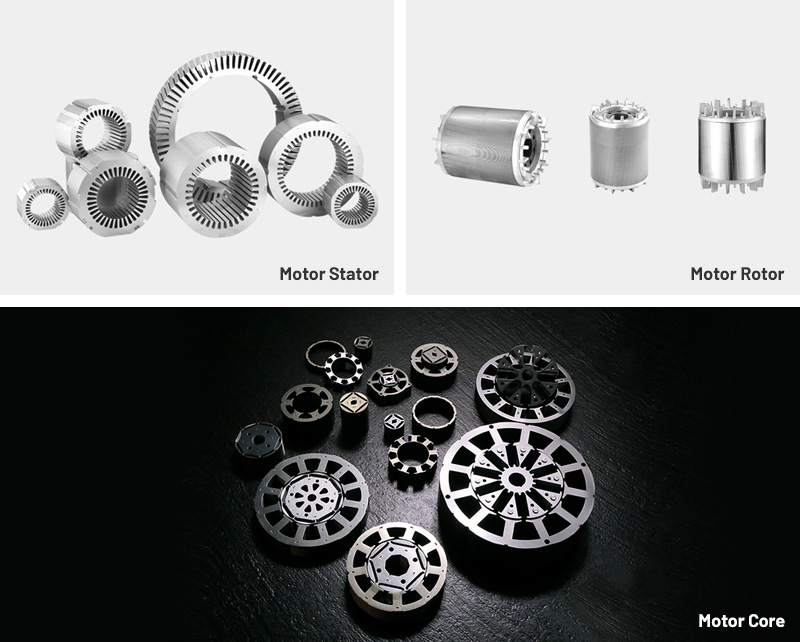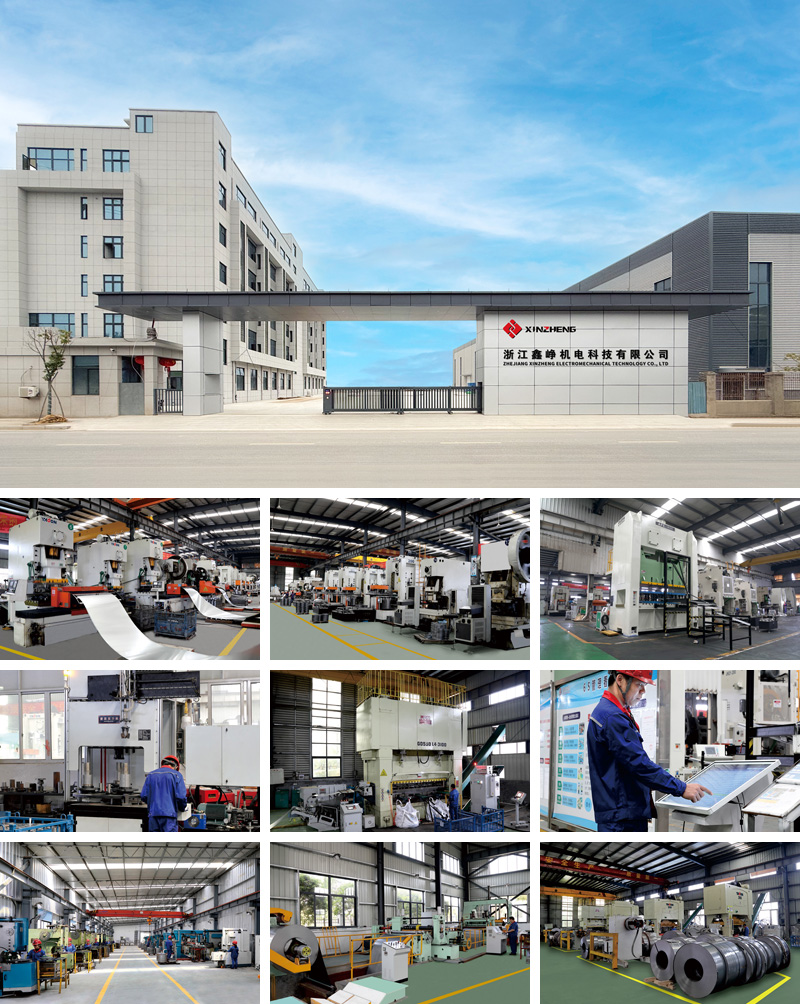The growing demand for high-efficiency, high-performance electric motors has significantly increased the focus on core components such as motor laminations. Electric vehicles, industrial automation, renewable energy systems, and advanced robotics rely on motors that operate with precision, high efficiency, and minimal energy loss. Traditional laminated cores, when manufactured with conventional methods, can suffer from inconsistencies in thickness, burrs, or uneven stacking, resulting in magnetic losses, vibration, and reduced lifespan.
Precision die-cut motor laminations address these challenges by providing uniform, high-accuracy laminations that maintain structural and magnetic integrity under mechanical, thermal, and electromagnetic stresses. The market for precision laminations is expanding rapidly as manufacturers strive to meet global efficiency standards and reliability requirements, particularly in automotive, aerospace, and renewable energy sectors.
Motor laminations are thin sheets of electrical steel assembled to form the stator and rotor cores of electric motors. They serve to guide magnetic flux efficiently while minimizing eddy current and hysteresis losses. Inadequate precision during lamination cutting or stacking can create air-gap inconsistencies, increase vibration, and reduce overall motor efficiency.
Precision die-cut motor laminations utilize advanced tooling and manufacturing methods to ensure dimensional accuracy, uniformity, and minimal mechanical stress. Key principles include:
Dimensional Accuracy: Ensures that each lamination matches exact specifications, maintaining consistent air gaps and magnetic alignment throughout the motor core.
Minimal Burrs and Edge Defects: Reduces mechanical stress during stacking and prevents localized flux disturbances.
Stress Reduction: Die-cutting combined with annealing and surface treatment reduces residual stress in the laminations, preserving flatness and magnetic properties.
By adhering to these principles, precision laminations support higher efficiency, lower noise, and longer operational life in demanding motor applications.
Precision die-cut laminations are typically manufactured from:
Electrical Steel (Silicon Steel): High-permeability steel with 2.5–3.5% silicon content reduces eddy current losses while maintaining magnetic performance.
Advanced Alloys: Nickel-iron or iron-cobalt alloys may be used for high-performance applications requiring higher saturation flux density and thermal stability.
Insulation Coatings: Each lamination is coated with durable insulation to prevent inter-lamination currents, improve thermal resistance, and protect against mechanical wear.
Die-cut laminations are designed for consistent magnetic paths and mechanical stability. Precision tooling produces uniform teeth, slots, and core shapes with minimal edge defects. The flatness of each lamination ensures stable stacking, reducing vibration and noise during operation. Insulation coatings are applied evenly to maintain electrical separation between layers.
Dimensional Precision: Tight tolerances in thickness, tooth width, and overall geometry ensure uniform air gaps and reduced magnetic losses.
Mechanical Stability: Maintains shape under assembly pressure, vibration, and rotational forces.
Magnetic Efficiency: Minimizes eddy current and hysteresis losses for higher motor efficiency.
Thermal Reliability: Coatings and materials resist temperature-induced deformation.
Material Preparation: Electrical steel is rolled to precise thicknesses and inspected for consistency.
Die-Cutting: High-precision dies cut laminations with tight tolerances and minimal burr formation.
Annealing: Stress-relief annealing reduces residual stresses and preserves magnetic properties.
Insulation Application: Coatings are applied and cured to ensure adhesion and thermal stability.
Stacking and Clamping: Laminations are assembled into stator or rotor cores with accurate alignment, ensuring consistent air gaps and minimal deformation.
The performance of precision die-cut laminations depends on several factors:
Material Purity and Composition: Impurities or inconsistent alloy content can affect both mechanical strength and magnetic properties.
Cutting Precision: Misalignment or uneven edges increase air-gap variation, reduce efficiency, and can cause noise.
Insulation Integrity: Cracked or poorly applied coatings can lead to inter-lamination currents and localized heating.
Residual Stress: Proper annealing and handling prevent warping and maintain lamination flatness.
Assembly Accuracy: Stacking errors or uneven clamping can reduce performance, especially in high-speed motors.
Choosing a reliable supplier is critical for consistent lamination quality:
Material Certification: Suppliers should provide detailed chemical composition, magnetic properties, and tensile strength data.
Process Documentation: Transparency in cutting, annealing, and coating processes ensures reproducibility.
Quality Assurance: Inspection of thickness, flatness, coating integrity, and mechanical properties is essential.
Production Capacity: Suppliers must be able to deliver consistent batches at scale for OEM requirements.
Compliance: Meeting international standards for electrical steel, environmental regulations, and motor-specific requirements is mandatory.
Even with precision manufacturing, several challenges persist:
Cost: High-precision laminations require advanced tooling, premium materials, and stringent quality control.
Manufacturing Complexity: Thin, high-accuracy laminations are difficult to cut without burrs or deformation.
Thermal and Mechanical Trade-offs: Achieving both magnetic efficiency and mechanical stability requires careful design and material selection.
Supply Variability: Differences in alloy consistency, coating quality, or annealing can affect motor performance.
Precision die-cut laminations are essential in motors where accuracy, efficiency, and reliability are critical:
Electric Vehicle Motors: High-speed, compact traction motors require laminations with precise air gaps and flatness.
Industrial Drives: Motors powering machine tools, pumps, and compressors need laminations resistant to mechanical stress and vibration.
Renewable Energy Generators: Wind turbines and hydroelectric generators benefit from laminations that maintain efficiency under variable loads.
Automation and Robotics: High-speed, low-noise motors in robotics rely on precise laminations for optimal performance.
HVAC and Continuous Operation Motors: Laminations retain magnetic and mechanical properties under prolonged thermal and operational stress.
The motor lamination industry continues to evolve with technology and material innovation:
Advanced Alloys: Research into nickel-iron and iron-cobalt alloys enhances saturation flux density and mechanical resilience.
Enhanced Insulation Coatings: Inorganic and hybrid coatings improve durability and thermal performance.
Precision Manufacturing Techniques: Laser cutting, EDM, and automated stacking improve flatness, reduce burrs, and enhance dimensional control.
Integration with Thermal Management: Laminations optimized for cooling efficiency allow compact, high-power designs.
Global Standardization: As global EV, industrial, and renewable energy markets expand, standard lamination specifications ensure consistent quality across suppliers.
Q: What is a precision die-cut motor lamination?
A: A thin electrical steel sheet cut with high-accuracy dies to maintain dimensional consistency, flatness, and optimal magnetic performance in motor cores.
Q: How does die-cutting improve motor performance?
A: Precision die-cutting minimizes burrs, maintains uniform thickness, and reduces air-gap variations, leading to higher efficiency, lower noise, and extended motor lifespan.
Q: Can standard laminations be used for high-speed motors?
A: Standard laminations may deform under mechanical stress or vibration. Precision die-cut laminations are specifically designed for high-performance applications.
Q: Are precision laminations more expensive?
A: Yes, due to advanced materials, tooling, and quality control, but they offer lower total cost of ownership through improved efficiency and reliability.
Precision die-cut motor laminations are a cornerstone for high-performance, efficient, and reliable electric motors. By combining advanced materials, precise cutting methods, stress-relief processing, and durable insulation coatings, these laminations ensure mechanical stability, magnetic consistency, and long-term operational performance. Applications span electric vehicles, industrial drives, renewable energy, robotics, and high-speed motors. With ongoing innovation in alloys, coatings, and manufacturing techniques, precision die-cut laminations continue to meet the demands of modern motor design, offering enhanced efficiency, durability, and reliability for global markets.
Product Category

Comprehensive Strength


Copyright © Zhejiang Xinzheng Electromechanical Technology Co., Ltd. All Rights Reserved.
This website uses cookies to ensure you get the best experience on our website.